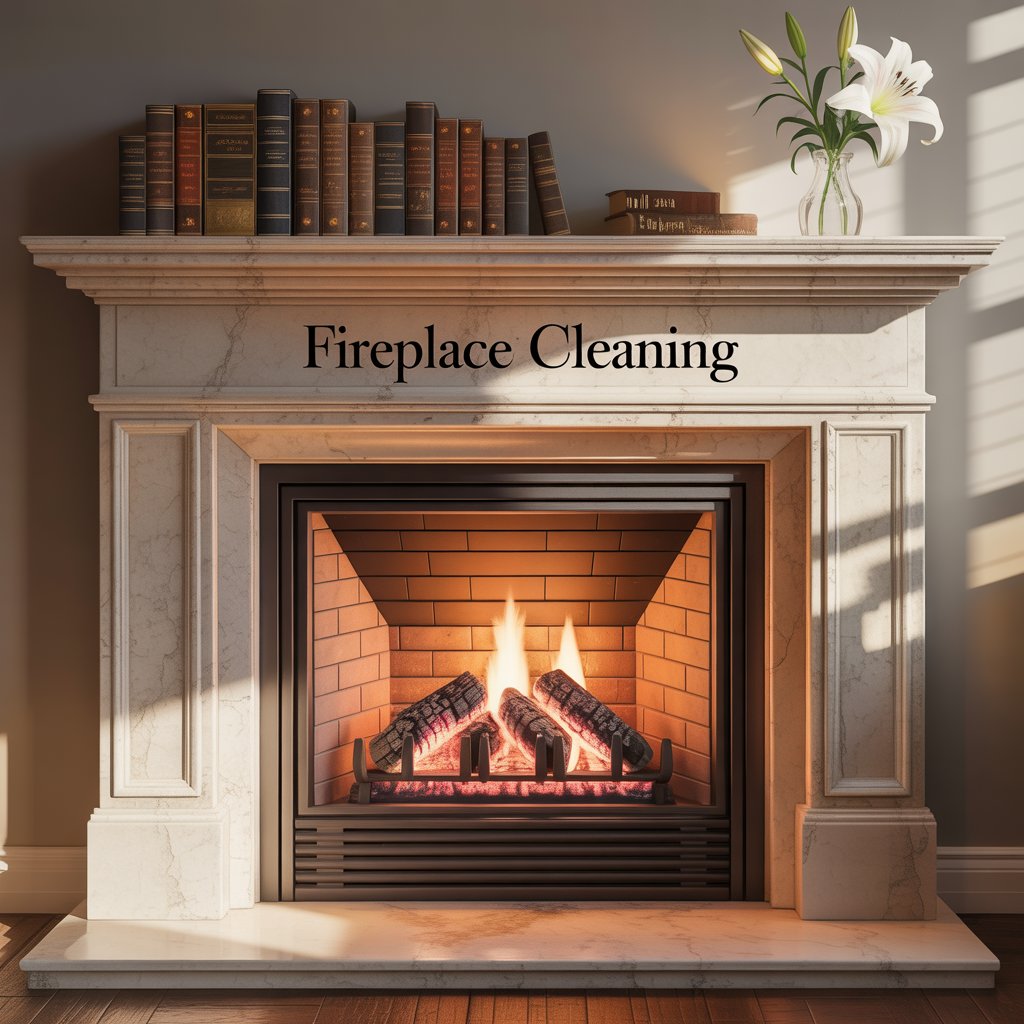How Often Should You Schedule Fireplace Cleaning for Maximum Safety?

A fireplace is a valuable feature in many homes, offering warmth and comfort during colder months. However, regular care is required to ensure it operates safely and efficiently. Over time, ash, soot, and creosote naturally accumulate inside the chimney and fireplace system, creating potential fire hazards if not removed. To minimize risks, homeowners must understand how frequently professional cleaning should be performed. Annual service is the widely recommended standard, though frequency can increase based on usage levels and fuel type. Staying consistent with Fireplace Cleaning is the most effective way to protect your home.
Why It Matters
Fireplaces are designed to burn fuel in a contained, safe manner. When debris is allowed to build up, it restricts airflow and increases the chance of smoke entering the home. More importantly, creosote a highly flammable byproduct of wood burning can ignite and cause devastating chimney fires. According to the Chimney Safety Institute of America (CSIA), creosote is responsible for thousands of residential fires every year. Beyond safety, cleanliness also impacts performance. A properly cleaned fireplace burns more efficiently, delivers better heat output, and ensures harmful fumes are vented outside instead of leaking into indoor air.
Common Problems
When cleaning is delayed or skipped, several common issues can occur. One of the most noticeable is persistent smoke backing up into the living area instead of traveling through the chimney. This usually signals restricted airflow caused by creosote buildup or debris blockage. Another issue is the strong, lingering odor of burned wood and tar, which worsens in humid weather. Reduced heating efficiency is also a frequent problem, as clogged systems prevent the fireplace from reaching optimal combustion. In some cases, visible stains or soot deposits appear around the opening, warning that immediate cleaning is required to avoid further risks.
Key Benefits
Scheduling routine cleaning offers multiple advantages that extend far beyond appearance. First and foremost, it significantly reduces the chance of chimney fires by removing combustible deposits. Second, it improves indoor air quality by preventing smoke, toxins, and carbon monoxide from circulating throughout the home. Third, it ensures peak efficiency, meaning the fireplace uses less fuel while producing more heat. Fourth, cleaning extends the lifespan of both the fireplace and chimney system, saving homeowners from costly repairs down the line. Lastly, it provides peace of mind knowing that one of the most common household fire hazards is being effectively managed.
The Role of Fireplace Inspection
While cleaning is crucial, pairing it with professional Fireplace Inspection is equally important. An inspection evaluates the condition of all components, from flue liners and dampers to masonry and seals. Many potential hazards cannot be detected by cleaning alone, such as hidden cracks, moisture damage, or faulty venting systems. Inspections are typically classified into three levels, ranging from basic visual checks to in-depth evaluations with specialized tools. Most professionals recommend annual inspections alongside cleaning to ensure the fireplace is structurally sound and operating within safety standards. This combination not only protects against fire hazards but also identifies early signs of damage that may require repair.
Cost Breakdown
The cost of professional fireplace cleaning and inspection varies depending on the type of system, condition, and location. On average, most homeowners pay between $120 and $350 for cleaning, with inspection fees ranging slightly lower or being included in package deals. Below is a general breakdown for reference:
| Service Type | Average Cost Range |
| Standard Fireplace Cleaning | $120 – $180 |
| Deep Cleaning with Creosote | $180 – $250 |
| Basic Fireplace Inspection | $100 – $150 |
| Full Cleaning & Inspection | $250 – $400 |
Disclaimer: Prices vary depending on region, service provider, and condition of the fireplace. Homeowners should request a customized estimate before scheduling service.
Key Features
Professional fireplace cleaning services include several essential features that make them a worthwhile investment. Certified technicians use specialized brushes, vacuums, and cameras to thoroughly remove flammable deposits while preventing dust from spreading inside the home. Many companies also provide inspection reports with photos, documenting the fireplace’s condition and highlighting any areas of concern. Dust-control systems and drop cloths ensure minimal mess during the service. Another key feature is compliance with safety codes established by organizations like the NFPA, ensuring the fireplace is operating within recommended guidelines. These features combine to give homeowners both safety and efficiency.
Professional Insight
“Annual fireplace cleaning and inspection are critical steps in reducing home fire risks. Even if the fireplace looks clean, creosote and hidden damage can compromise safety. Homeowners should treat professional service as essential, not optional,” says James Carter, Certified Chimney Professional.
FAQs
How often should a fireplace be cleaned?
Most professionals recommend at least once a year, ideally before the heating season. Heavy fireplace users may require cleaning twice annually.
Can I perform cleaning myself?
While minor ash removal is safe for homeowners, deep cleaning involving creosote should always be handled by certified professionals due to fire risks.
Do gas fireplaces need cleaning too?
Yes, although they produce less soot, gas units still require occasional cleaning and annual inspections to check for blockages or gas leaks
What time of year is best for service?
Late summer or early fall is ideal, as technicians are more available and homeowners can prepare before peak usage in winter.
Conclusion
Determining how often to schedule fireplace cleaning comes down to balancing safety, efficiency, and usage levels. For most households, annual service is sufficient, while frequent users may need additional visits. Cleaning alone is effective, but combining it with inspection provides maximum safety by addressing hidden risks. Beyond fire prevention, routine service improves air quality, boosts efficiency, and prolongs the system’s lifespan. Considering the relatively low cost compared to potential damages, prioritizing professional cleaning and inspection is a smart investment in both property protection and family safety.
Read More: Chimney Sweep Hamilton



